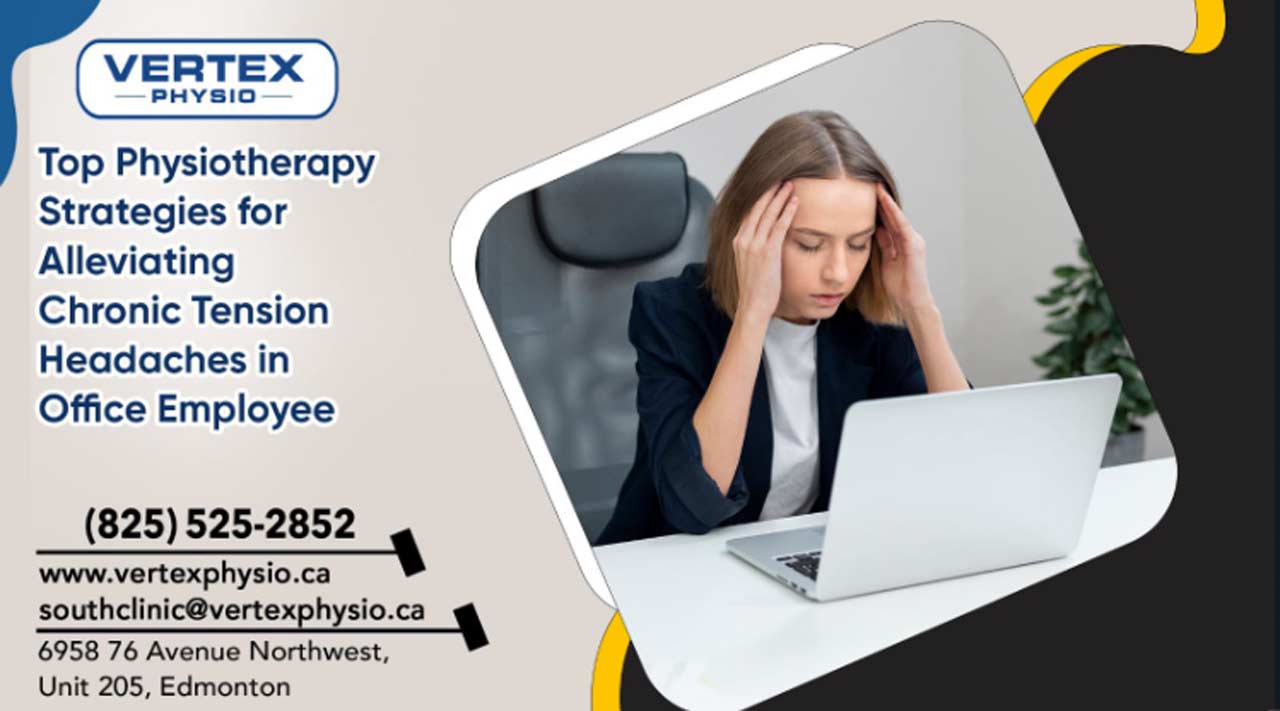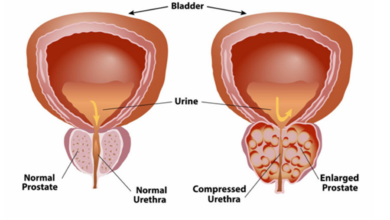Chronic tension headaches are common among office employees, often exacerbated by long desk work and poor ergonomic practices. Those suffering from this persistent issue can find relief through work injury physiotherapy in Edmonton.
This specialized form of physiotherapy, including that approved by the Worker’s Compensation Board—-WCB physiotherapy, focuses on confronting the root causes of tension headaches.
Additionally, personalized tension headache remedy is provided, tailored to each individual’s needs, ensuring that office employees can achieve lasting relief and improve their overall well-being.
Ergonomic Assessments
Technique: Workplace Analysis
Trained physiotherapists conduct a thorough analysis of an employee’s workstation. This process involves observing the employee’s posture while they work, measuring the heights and distances of their chair, desk, monitor, and keyboard, and assessing other aspects of the workstation setup.
- Chair Height and Support: Ensuring the chair provides proper lumbar support and allows the feet to rest flat on the floor and thighs parallel to the ground.
- Monitor Position: The top of the computer screen needs to be at or slightly below eye level, positioned about arm’s length away from the user to prevent leaning forward or straining the neck.
- Keyboard and Mouse Setup: These should be placed so the shoulders can remain relaxed with elbows at a 90-degree angle, preventing undue strain on the upper back and shoulders.
See Also: 200+ Best Creative Team Names for Workplace
Benefits
- Prevention of Poor Posture: Proper ergonomic adjustments can significantly reduce the risk of developing poor postural habits that strain muscles and lead to tension headaches.
- Reduced Strain: Optimizing the workspace helps minimize physical stress on the body, particularly in areas like the neck and shoulders, which are common sites of tension that contribute to headaches.
Manual Therapy
Techniques
Neck and Shoulder Manipulations:
- Soft Tissue Massage focuses on relaxing tight muscles in the neck and shoulders through various techniques, such as kneading, stroking, and percussion.
- Myofascial Release entails the use of steady, controlled pressure on restricted myofascial tissue to alleviate discomfort and enhance flexibility.
- Mobilization Techniques: Gentle, controlled movements are applied to the neck and shoulder joints to increase the range of motion and alleviate pain.
Trigger Point Therapy:
- Locate and exert focused pressure on trigger points, hypersensitive areas within the skeletal muscle characterized by noticeable nodules in tense muscle fibres.
- The therapist uses fingers, knuckles, or tools to apply non-invasive pressure to these points to “release” them, reducing the contraction and alleviating pain.
Benefits
- Immediate Pain Relief: Manual therapy techniques often provide quick relief from the discomfort associated with tension headaches by directly addressing the muscle tightness and trigger points that cause pain.
- Increased Mobility: Regular manual therapy improves flexibility and increases the range of movement in the neck and shoulders. This not only helps reduce current headache symptoms but also prevents future occurrences by alleviating the pressure points that contribute to muscle tension and headaches.
Exercise Therapy
Techniques
Strengthening Exercises:
To build strength in the muscles of the neck, shoulders, and upper back, which supports proper posture and reduces the likelihood of tension buildup that can lead to headaches.
Examples:
- Isometric Neck Exercises: Holding the head in a forward or side position against gentle resistance can strengthen neck muscles.
- Shoulder Blade Squeezes: Bringing the shoulder blades together and downward to strengthen the upper back muscles.
Stretching Routines:
To maintain flexibility in the neck, shoulders, and upper back, thus reducing muscle tightness and the tension that often triggers headaches.
Examples:
- Neck Flexion and Extension: Gently tilt the head forward, stretch the back of the neck and then tilt it back to pull the throat area.
- Lateral Neck Stretches: This involves tilting the head towards each shoulder to stretch the sides of the neck.
- Shoulder Shrugs and Rolls: Lifting the shoulders towards the ears and rolling them back and down to release tension.
Benefits
- Load Reduction on Cervical Spine: Strengthening the muscles around the cervical spine helps distribute the forces more evenly during movements and static postures, reducing stress on any single structure.
- Flexibility and Prevention: Regular stretching improves muscle elasticity, which helps prevent the stiffness and muscle tightness that often lead to tension headaches.
Stress Management and Relaxation Techniques
Techniques
Biofeedback:
- Using sensors that measure bodily functions like heart rate, muscle tension, and skin temperature, biofeedback helps individuals gain awareness and control over these physiological responses to stress.
- This includes training sessions where employees learn how to modify their responses to stress by using the feedback from the sensors to practice relaxation techniques.
Mindfulness and Breathing Exercises:
- Guided Imagery: Employees are guided through peaceful and relaxing mental scenarios, which can help divert their minds from stressors.
- Deep Breathing Exercises: Techniques like diaphragmatic breathing, where employees focus on breathing deeply from the abdomen to help reduce rapid, shallow breathing that can exacerbate tension and anxiety.
- Meditation: Regular practice of meditation, including mindfulness-based stress reduction (MBSR), which teaches participants to focus on the present moment and reduce rumination.
Read Also: 8 Ways For Supporting Loved Ones in Mental Health Crisis
Benefits
- Enhanced Coping Mechanisms: These techniques empower employees to manage their stress better, which can significantly decrease the frequency and severity of tension headaches.
- Overall Wellbeing: Effective stress management reduces headaches and improves general health, emotional balance, and productivity.
Work injury physiotherapy in Edmonton focuses on a comprehensive approach that confronts the physical and psychological aspects of work-related stress, ensuring that employees can perform their duties effectively without risking their health.
Relief at Your Fingertips
Vertex Physiotherapy offers WCB-approved treatments specifically designed to alleviate tension headaches. If you’re an office worker struggling with chronic tension headaches, consider seeking expert care at Vertex Physiotherapy. Our specialized approach includes a range of therapeutic techniques that can help you manage and significantly diminish the frequency and intensity of your headaches.
Take the first step towards a more comfortable and productive work life by contacting +1(825)525-2852 or visit www.vertexphysio.ca to know more. We are ready to help you overcome the discomfort of tension headaches with tailored solutions through work injury physiotherapy in Edmonton.









